Dinosaurs are a type of giant reptiles that once existed on the earth. They lived in the Mesozoic and late Mesozoic era from about 230 million to 65 million years ago. Dinosaurs are generally thought of as huge, powerful animals that dominated the Earth for up to 160 million years before their sudden extinction. The size of dinosaurs ranges from small dinosaurs the size of sparrows to behemoths with a body length of more than 30 meters, such as Brontosaurus and Abelisaurus. So what are the top ten most powerful dinosaurs? Here are some of the top ten dinosaurs considered to be the strongest, in no particular order:
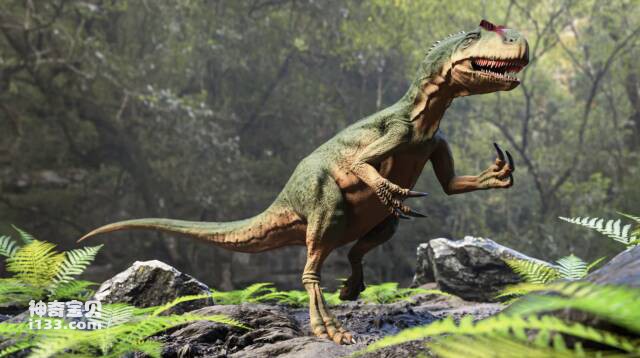
1. Allosaurus
Allosaurus is one of the most famous large carnivorous dinosaurs, occupying the top of the food chain in the late Jurassic terrestrial ecosystem. Allosaurus was described and named in 1877 by O'Neill Marsh, the great American paleontologist of the 20th century. . They are also the most abundant and widespread predators found in the Late Jurassic. Adult Allosaurus can reach 9 meters in length, and a few individuals are thought to reach 12 meters. Although not as burly as Tyrannosaurus rex, Allosaurus has a more well-proportioned body and more developed forelimbs, making it appear more muscular. At the same time, there are far more specimens of Allosaurus than Tyrannosaurus rex, making it one of the most thoroughly studied dinosaurs by paleontologists. Due to the extremely large number of fossils excavated, Allosaurus has become the iconic fossil species of the Morrison Formation.
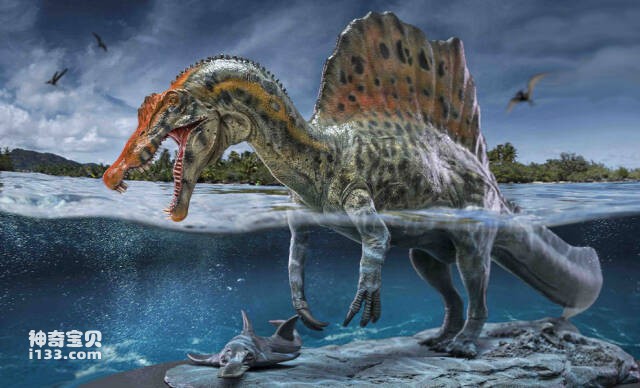
2. Spinosaurus
Spinosaurus lived in the Late Jurassic period, about 150 million to 130 million years ago, and was mainly distributed in what is now North America and Europe. The most striking feature of Spinosaurus is a row of large and hard bone plates on the back of the body. These bone plates are shaped like leaves and play a role in protecting the body. They may also be tools to regulate body temperature or scare away natural enemies. Spinosaurus' tail also had a row of sharp spines that could be used to defend against attacks. Spinosaurus had a low body structure and thick limbs, suitable for moving on land. Their jaws are equipped with serrated teeth for chewing. An adult Spinosaurus is about 9 meters long and weighs up to 2.5 tons. It is the largest carnivorous dinosaur currently known. It has long and sharp spines and may also have the ability to swim.
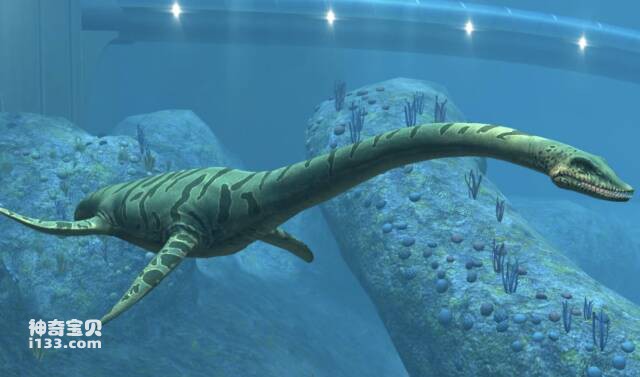
3. Dragon King Plesiosaurus (Elasmosaurus)
The King of Dragons, Plesiosaurus, was a very large marine reptile with a long neck and sharp teeth. It may have been the overlord of hunters in the sea. They lived in the late Cretaceous period about 70 million years ago, and were mainly distributed in the waters of western and central North America today. It can reach 15-17 meters in length and weigh 5-7 tons. They have strong necks and tails for swimming quickly in the water. The jaws of the King Plesiosaur were equipped with sharp teeth that could be used to hunt fish, shellfish and other marine life. Fossils of King Plesiosaurus are widely distributed in North America, especially in the inland sea basins of Mexico and the United States. Through the study of these fossils, scientists have learned about the living habits and evolutionary history of King Plesiosaurus. It is said that the extinction of King Plesiosaurus may be related to sea level rise and climate change at the end of the Cretaceous period.
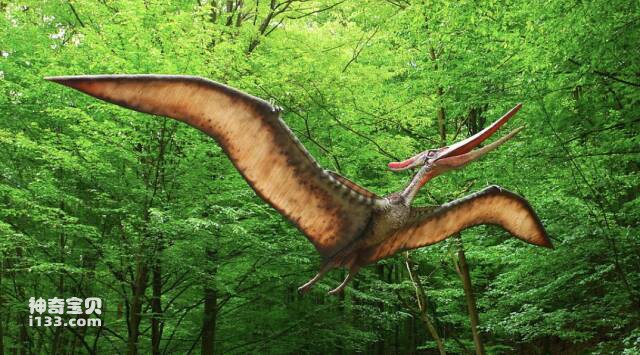
4. Pteranodon
Pterodactyls are often called "dinosaurs", but in fact they are not real dinosaurs, but a type of ancient creatures that were contemporary with dinosaurs. They lived in the Late Pygmy Period from about 150 million years ago to 145 million years ago. During the Luoji period, they were mainly distributed in what is now Europe. Pterodactyl was one of the largest known pterosaurs, capable of gliding through the air with ease and grabbing prey. The most distinctive feature of pterodactyls are their wings. Their wing membranes are made of skin and bone scaffolding that extend to the ends of their limbs. Pterodactyl jaws and teeth were adapted for hunting small insects and other invertebrates. The body of Pterodactyl is relatively small, only a few dozen centimeters long. Their limbs are long and slender, suitable for flying in the air. Although pterodactyls couldn't flap their wings like modern birds, they could use air currents to glide through the air. Pterodactyl fossils are widely distributed throughout Europe, especially in Bavaria, Germany and other places. Through the study of pterodactyl fossils, scientists have learned about the flight methods, living habits and evolutionary history of these ancient creatures.

5. Fusion Dragon (Ankylosaurus)
Fusionosaurus belongs to the ankylosaur group. They lived in the Late Cretaceous period about 68 million to 66 million years ago, and were mainly distributed in what is now North America. The fusion dragon's body has a low structure, with a row of hard bone plates and sharp spines on its back to protect itself from predators. Fusionosaurus's jaws had a large number of serrated teeth, suitable for chewing plants. The fusion dragon's limbs are short and stocky, suitable for supporting weight and moving at a slow pace. Fusion dragons are larger in size. Adult individuals can reach 6-7 meters in length and may weigh more than 4 tons. Fossils of Fusionosaurus are widely distributed in North America, especially in the western United States and Alberta, Canada. Through the study of Fusionosaurus fossils, scientists have learned about the living habits and evolutionary history of these dinosaurs. Fusionosaurus is one of the most famous species of ankylosaurs, which became the dominant land giant in North America during the late Cretaceous. Although Fusionosaurus is now extinct, the fossils they left behind still provide us with important information about paleontology and the evolutionary history of dinosaurs.
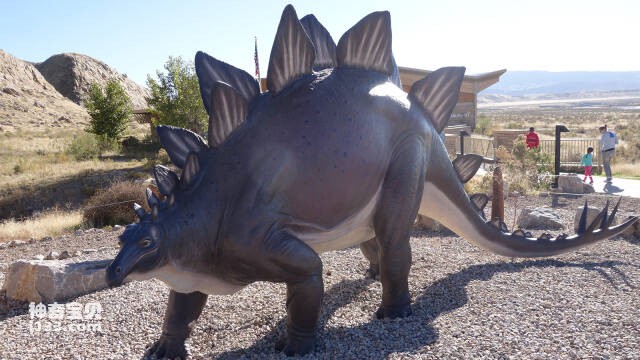
6. Stegosaurus
Stegosaurus belongs to the group Ankylosaurus. They lived in the Late Jurassic period from about 150 million years ago to 130 million years ago, and were mainly distributed in what is now North America and Europe. The most striking feature of Stegosaurus is a row of large and hard bone plates on its back. These bone plates are shaped like leaves and play a role in protecting the body. They may also be tools to regulate body temperature or scare away natural enemies. Stegosaurus also had a row of sharp spines on its tail that could be used to defend against attacks. Stegosaurus has a low body structure and thick limbs, suitable for moving on land. Their jaws are equipped with serrated teeth for chewing plants. An adult Stegosaurus is about 9 meters long and weighs up to 2.5 tons. Fossils of Stegosaurus are widely distributed around the world, especially in places such as Colorado and Utah in North America, as well as in European countries such as the United Kingdom and France. Through the study of Stegosaurus fossils, scientists have learned about the living habits, reproduction methods and evolutionary history of these dinosaurs.
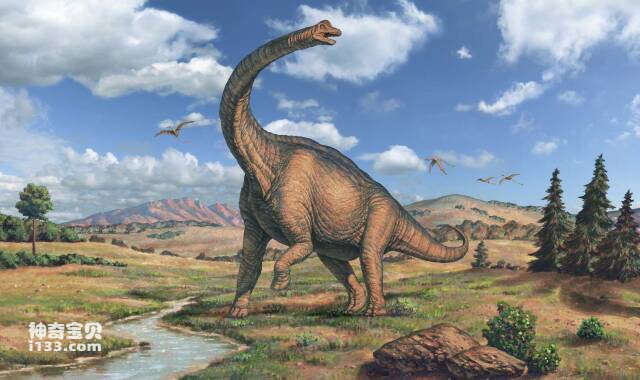
7. Diplodocus (Brachiosaurus)
Diplodocus (Brachiosaurus) is an extinct herbivorous dinosaur belonging to the sauropod group. They lived in the Late Jurassic period from 155 million to 142 million years ago, and were distributed in areas such as present-day North America, Europe, and Africa. Diplodocus is one of the largest dinosaurs. Its body length can reach more than 30 meters, its shoulder height can reach 16 meters, and its weight is about 80 tons. Diplodocus have very long necks that help them feed on high branches. The hind legs of Diplodocus are longer than the front legs, so they can look for food in an upright posture. Diplodocus is considered one of the greatest animals in the dinosaur kingdom, stunning for its huge size and unique appearance. It is one of the largest land animals, with a long neck and strong limbs, and may need to eat hundreds of kilograms of vegetation every day to survive.
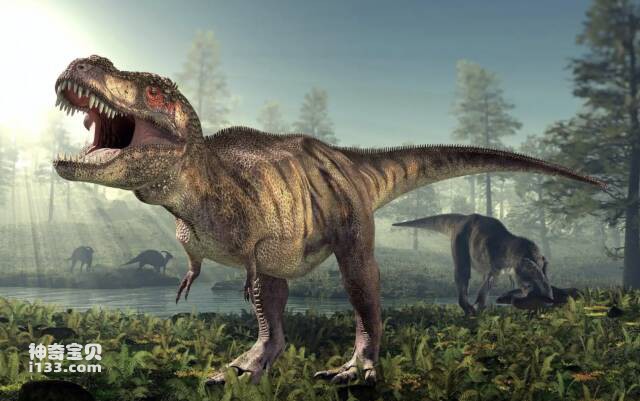
8. Tyrannosaurus rex
Tyrannosaurus rex, also known as Tyrannosaurus rex, is most notable for its strong jaws and sharp teeth that can easily tear apart the flesh of other dinosaurs. The body of Tyrannosaurus Rex has a heavyweight structure, and its limbs are thick and powerful, suitable for running at short distances. The skull of Tyrannosaurus was very large, accounting for about 1/3 of the entire body length, and it had a very high IQ. It is considered to be one of the dinosaurs with an IQ equivalent to that of a modern orangutan. An adult tyrannosaurus is about 12-15 meters long and weighs 6-9 tons. It is one of the largest species in the theropod suborder. They lived during the Late Cretaceous Period, about 68 million to 65 million years ago, and were mainly distributed in what is now North America. Tyrannosaurus fossils are widely distributed in North America, especially in South Dakota and other places in the United States. Through the study of Tyrannosaurus fossils, scientists have learned about the living habits and evolutionary history of these dinosaurs. Tyrannosaurus is one of the most famous animals in the dinosaur kingdom. Their ferocious image and powerful strength make people remember them. At the same time, Tyrannosaurus often appears in movies, games and other entertainment and cultural works, becoming a popular cultural symbol.
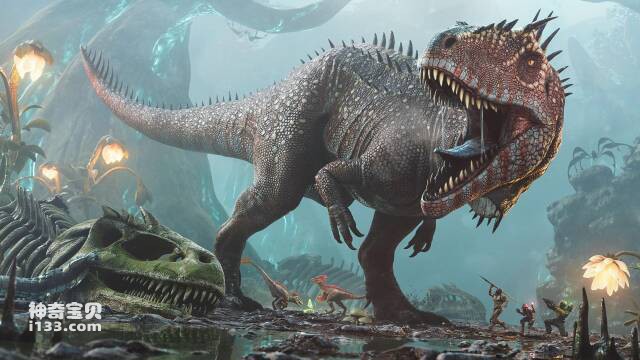
9. Carcharodontosaurus
The most striking feature of Carcharodontosaurus is its huge dorsal sail and long, sharp teeth, which can easily prey on fish and other dinosaurs in the water. Carcharodontosaurus had a spindle-shaped body and thick and powerful limbs, suitable for rapid movement on land and in water. They also had a strong sense of smell and were able to sense the smell of nearby prey, making them quite intelligent dinosaurs. An adult carcharodontosaurus is more than 15 meters long and weighs 6-9 tons. It is one of the largest species in the theropod suborder. Their fossils have been found in riverbank areas in Egypt, Morocco and other African countries. The most famous of them is the complete Carcharodontosaurus fossil discovered in the Bahariya Formation in Egypt. Through the study of Carcharodontosaurus fossils, scientists have learned about the living habits and evolutionary history of these dinosaurs. In recent years, with the new excavation and discovery of Carcharodontosaurus fossils, the understanding of its morphology and behavior has been constantly updated. Carcharodontosaurus is a relatively little-known dinosaur, but its unique appearance and lifestyle still arouse people's amazement and curiosity.
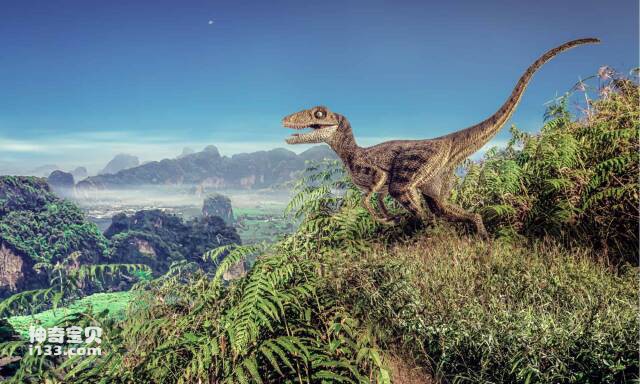
10. Velociraptor
The most striking feature of Velociraptor is its long and pointedSharp claws for cutting and grabbing prey. Their bodies are spindle-shaped and their limbs are thick and powerful, suitable for running at high speeds and turning quickly. Velociraptor had a relatively small skull, but had a high IQ and was considered one of the dinosaurs with an IQ equivalent to that of modern birds. An adult Velociraptor is about 2-3 meters long and weighs 20-30 kilograms. It is one of the smaller species among the theropods. Their fossils are widely found in the deserts and Gobi areas of Mongolia and northern China. The most famous of them are the many complete Velociraptor fossils found in the Gobi Desert of Mongolia. Through the study of Velociraptor fossils, scientists have learned about the living habits and evolutionary history of these dinosaurs. In recent years, with the new excavation and discovery of Velociraptor fossils, the understanding of its morphology and behavior has been constantly updated. Velociraptor is one of the more well-known dinosaurs. Their ferocious images often appear in movies, games and other entertainment and cultural works. At the same time, Velociraptor is also one of the important research objects in the field of dinosaur research, and is of great significance to our understanding of the evolutionary history and ecological characteristics of theropod dinosaurs.
In short, these dinosaurs all have their own unique characteristics and advantages. Although most of them have become extinct, they provide people with a deeper understanding of the ecological environment and evolutionary history of dinosaurs.
animal tags:
We created this article in conjunction with AI technology, then made sure it was fact-checked and edited by a Animals Top editor.